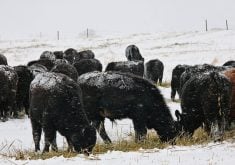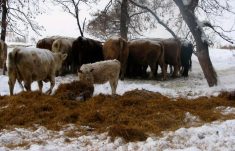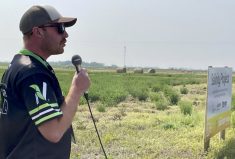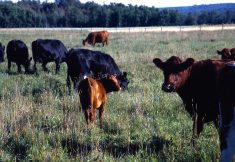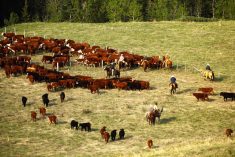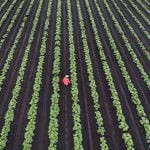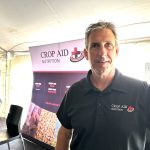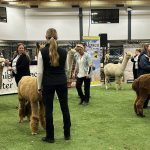Glacier FarmMedia – Grain farmers can harvest a heap of benefits by cycling perennial forages through rotations, says an agronomist with Federated Co-operatives Ltd.
Ken Wall said the economics of growing forage as a cash crop have changed significantly in recent years due to market conditions and a sharp increase in the price of fuel.
Hay grown locally is in high demand and the prices buyers are willing to pay now compete with grain crops for profitability.
Read Also
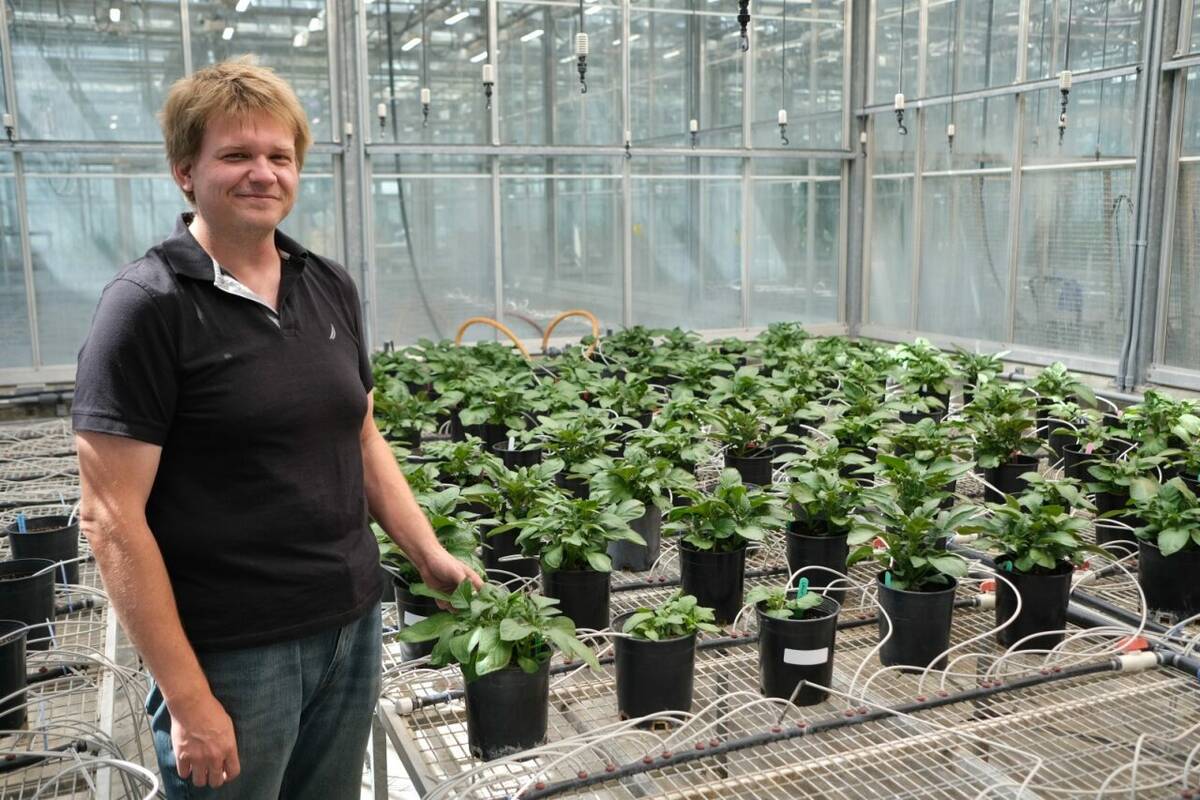
Hail research hopes to benefit potato growers
Alberta research scientist measures hail storm and heat dome affects on potato crops
Based on a harvest of two tons per acre, Wall suggested, it’s possible to get $450 to $500 per acre from hay sales, “so it really does start to compete with some of these higher-yielding, higher-dollar annual crops,” he told farmers at the recent Ag in Motion outdoor farm show here.
However, the cash value is only part of the equation because legume forages fix their own nitrogen to support the crops that follow.
“A legume such as alfalfa can fix up to 250 pounds of nitrogen per year,” he said.
There are other agronomic rationales. A perennial crop can help control salinity, which producers have struggled with in recent years of water supply extremes. It controls weeds without herbicides and breaks up disease cycles such as aphanomyces.
It also helps build mycorrhizae in the soil, which allows plants to make better use of available phosphorus.
Wall noted the federal government’s target of reducing fertilizer emissions by 30 per cent by 2030.
“I really do think one of the things that’s going to become a player in this is forages because, again, you can reduce the amount of fertilizer you’re putting in.”
However, he cautioned that if farmers want forages to pay like cash crops, they need to treat them like cash crops, with the same care and attention paid to annuals.
Wall advised farmers to get weed populations under control and prepare a firm seedbed before seeding if they’re interested in the crop. Starter fertilizer will also set forage establishment up for success.
“Don’t cheap out and buy common seed, especially for larger acreages where you really want to get some production.”
He further encouraged growers to put in a cover crop. That can be harvested as greenfeed in the first year while the perennial crop gets established, he said.
– This article was originally published at the Manitoba Co-operator.




